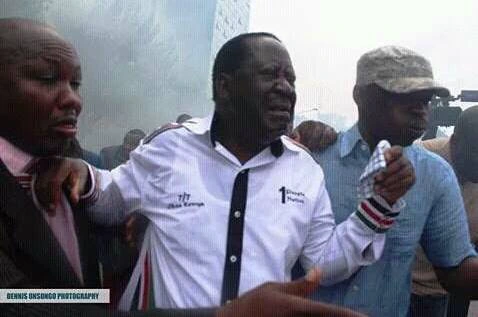In a surprising turn of events, former Prime Minister and Orange Democratic Movement (ODM) leader, Raila Odinga, expressed his frustration and anger at a group of rebel ODM Members of Parliament (MPs). During a recent party meeting, Raila openly urged these dissenting MPs to align themselves with President William Ruto, who is one of his main political rivals. This unexpected rift within the ODM party has raised questions about its unity and the future of the Kenyan political landscape.
The ODM party, founded in 2005, has been a significant player in Kenyan politics for years. It has a long-standing reputation as a bastion of opposition to the ruling party and a strong supporter of Raila Odinga’s presidential aspirations. However, recent events have exposed deep-seated disagreements within the party, primarily concerning the direction it should take in the upcoming elections.
The rebel MPs, led by vocal figures such as Aisha Jumwa and Suleiman Dori, have expressed dissatisfaction with Raila’s leadership and have openly flirted with the idea of joining Deputy President Ruto’s camp. These MPs argue that the ODM party has lost its focus and that aligning with Ruto could give them a better chance of securing political positions in the 2027 general elections.
Raila Odinga’s response, during a closed-door ODM parliamentary group meeting, was nothing short of explosive. He told the dissenting MPs that they were free to leave the party and join Ruto if they wished. This move, which some have described as a “tactical blunder” by Raila, has sparked a heated debate within the ODM ranks.
It is essential to understand the broader implications of this rift. For years, Raila Odinga has been the face of the ODM party and a symbol of opposition to the ruling government. His role in the “handshake” with President Uhuru Kenyatta in 2018, which led to the creation of the Building Bridges Initiative (BBI), was seen as a move towards unity and stability in the country. However, the ongoing disagreements within the ODM party could disrupt the fragile unity that has been cultivated since the handshake.
Furthermore, this development has the potential to reshape the political landscape of Kenya. Raila’s open challenge to rebel MPs and his suggestion that they join forces with his political rival, William Ruto, may strengthen Ruto’s camp, which has been gaining momentum in recent months. If these rebel MPs do indeed cross over to Ruto’s side, it could significantly bolster his chances in the upcoming elections.
The question now is whether this public spat within the ODM party is a sign of a larger disintegration or merely a temporary hiccup. Kenyan politics is notorious for its fluid alliances and ever-changing dynamics, making it challenging to predict the ultimate outcome of this rift. One thing is certain: as the 2027 general elections draw closer, Kenya’s political landscape will continue to be a hotbed of intrigue, alliances, and shifts in power.
In the coming months, all eyes will be on the rebel ODM MPs and their decision regarding their political future. The unity of the ODM party, Raila Odinga’s leadership, and the potential impact on the 2027 elections will be at the forefront of political discourse in Kenya. The nation waits in anticipation to see whether this surprising turn of events will reshape the trajectory of Kenyan politics.

